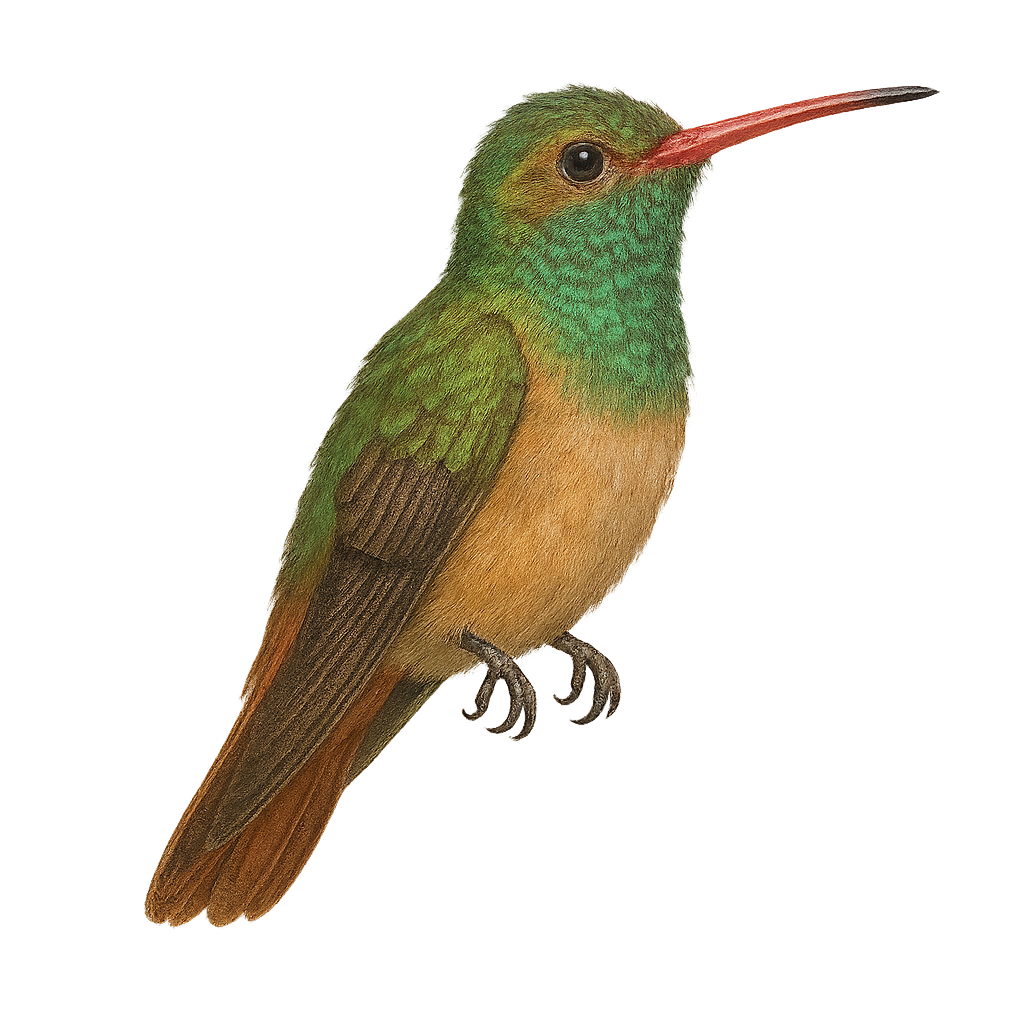Your wildlife photography guide.
Explore the buff-bellied hummingbird in detail, study its behavior, prepare your shots.
Where to observe and photograph the buff-bellied hummingbird in the wild
Learn where and when to spot the buff-bellied hummingbird in the wild, how to identify the species based on distinctive features, and what natural environments it inhabits. The WildlifePhotographer app offers tailored photography tips that reflect the buff-bellied hummingbird’s behavior, helping you capture better wildlife images. Explore the full species profile for key information including description, habitat, active periods, and approach techniques.
Buff-bellied Hummingbird
Scientific name: Amazilia yucatanensis

IUCN Status: Least Concern
Family: TROCHILIDAE
Group: Birds
Sensitivity to human approach: Suspicious
Minimum approach distance: 5 m
Courtship display: April to June
Incubation: 15-16 jours
Hatchings: April to July
Habitat:
tropical forests, mangroves, gardens
Activity period :
Primarily active during the day, with peak activity in the morning and late afternoon.
Identification and description:
The Buff-bellied Hummingbird, Amazilia yucatanensis, is a small, colorful bird, primarily green with a cinnamon-colored chest and belly. It is native to the southern United States and Mexico, where it inhabits tropical forests, mangroves, and gardens. Known for its rapid flight and hovering abilities, this hummingbird efficiently feeds on flower nectar, playing a crucial role in plant pollination. Males are often territorial, aggressively defending their territory against intruders. The breeding season typically extends from spring to summer, with nests built in shrubs or low trees.
Recommended lens:
400 mm – adjust based on distance, desired framing (portrait or habitat), and approach conditions.
Photography tips:
To photograph the Buff-bellied Hummingbird, use a 400mm lens or longer to capture precise details without disturbing the bird. Look for areas with abundant flowers, as these birds are attracted to nectar. Natural morning or afternoon light is ideal for capturing vibrant colors. Be patient and wait for the bird to perch or feed to get sharp shots. Use a tripod to stabilize your camera and avoid motion blur.
The WildlifePhotographer App is coming soon!
Be the first to explore the best nature spots, track rutting seasons, log your observations, and observe more wildlife.
Already 1 439 wildlife lovers subscribed worldwide

